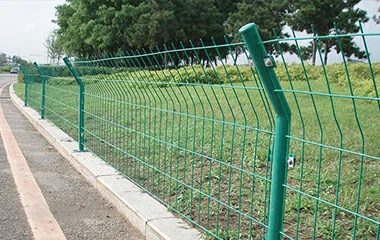 TEL:
+86-13102802206
TEL:
+86-13102802206
 Email:
fencenetting@china.com
Email:
fencenetting@china.com
 Language
Language
 TEL:
+86-13102802206
TEL:
+86-13102802206
 Email:
fencenetting@china.com
Email:
fencenetting@china.com
 Language
Language


The Versatile Nature of Wire Mesh Gabion Boxes
Wire mesh gabion boxes have gained significant popularity in various civil engineering, landscaping, and environmental applications. These robust structures, composed of durable wire mesh filled with rocks, soil, or other materials, serve as versatile solutions for several challenges, from erosion control to decorative landscaping features. This article explores the design, applications, benefits, and environmental impact of wire mesh gabion boxes.
Design and Construction
A wire mesh gabion box consists of a series of interconnected wire panels that create a rectangular or cubic form. Typically made from galvanized or PVC-coated steel, the wire mesh is designed to withstand harsh environmental conditions, including moisture, salt, and UV exposure. The construction process involves assembling the wire panels into a box shape and filling these boxes with natural materials, such as stones or gravel.
The filler materials not only provide structural integrity but also allow for eco-friendly drainage, making them particularly effective in managing water runoff and preventing soil erosion. Additionally, gabion boxes can be stacked or arranged in various configurations, providing flexibility in design for different applications.
Applications
Wire mesh gabion boxes are predominantly used in civil engineering and construction projects. One of their primary applications is in erosion control, where they are employed to stabilize riverbanks, shorelines, and hillsides. When strategically placed, gabion boxes reduce the velocity of flowing water and absorb the energy that could otherwise erode soil.
In urban settings, gabion walls can serve as effective retaining structures to manage changes in ground elevation. They are often used to create sound barriers or as decorative elements in parks and public spaces, enhancing aesthetics while providing functional benefits.

Furthermore, gabion boxes can act as temporary flood control barriers. During extreme weather events, they can be quickly deployed to protect vulnerable areas against flooding, making them a vital tool in disaster management strategies.
Benefits
The advantages of using wire mesh gabion boxes are manifold. Their flexible design allows them to adapt to various geographical and environmental conditions, making them suitable for a range of projects. The use of natural stone as filler material means that they can blend seamlessly into the landscape, offering an aesthetically pleasing solution.
Gabion boxes are also eco-friendly. They promote natural vegetation growth, which helps restore local ecosystems. Additionally, as they are constructed from reusable materials, their environmental footprint is minimized compared to conventional building methods.
Moreover, gabion structures require low maintenance once installed. They are resilient and durable, able to withstand significant external pressures and environmental stressors without frequent repairs or replacements.
Environmental Impact
Gabion boxes boast an environmentally friendly profile, contributing positively to ecosystem restoration. By allowing water to percolate through the structure, they help maintain natural hydrology, reducing runoff and encouraging groundwater recharge. The natural materials used in gabion boxes can serve as habitats for various species, fostering biodiversity in the area.
In conclusion, wire mesh gabion boxes are a compelling alternative for tackling erosion, stabilizing landscapes, and providing aesthetic enhancements in urban environments. Their versatility, durability, and eco-friendly attributes make them an increasingly popular choice for engineers, landscapers, and environmentalists alike. With ongoing innovations in materials and design, gabion boxes will undoubtedly continue to play a crucial role in sustainable construction practices for the foreseeable future.